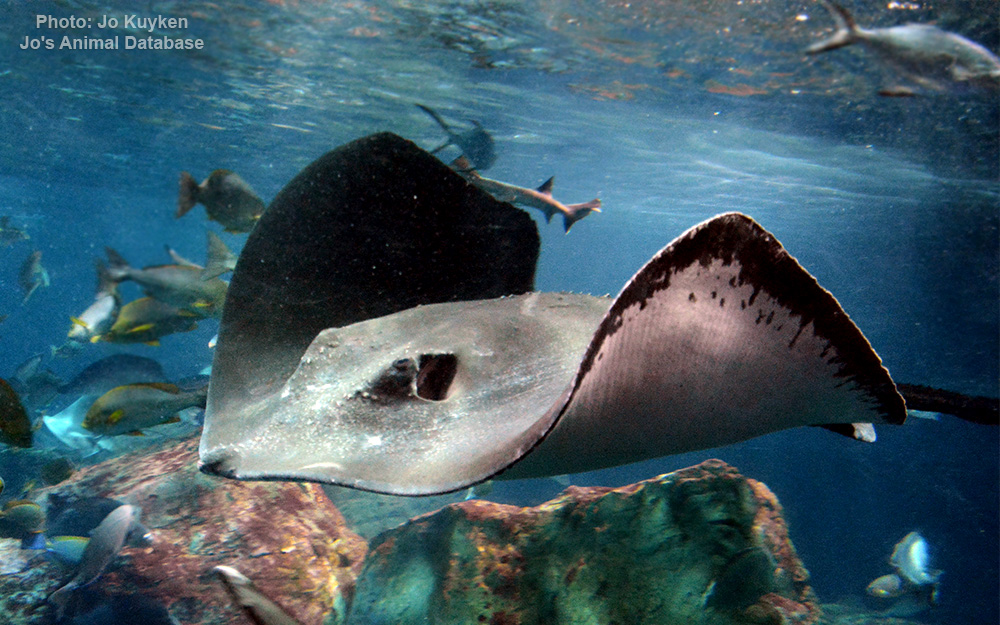Brown stingray
(Bathytoshia lata)

Image source: Jo's Animal Database
Classification
General data
The broad stingray (Bathytoshia lata), also known as the brown stingray or Hawaiian stingray, is a species of stingray in the family Dasyatidae.
They range across the Indo-Pacific from southern Africa to Hawaii, and are the predominant species of stingray in the inshore waters of the Hawaiian Islands.
This benthic fish also inhabits sandy or muddy flats at depths greater than 15 m (49 ft) in the Eastern Atlantic, from southern France to Angola, including the Mediterranean Sea.
Usually growing to 1 m (3 ft) across, the broad stingray has a wide, diamond-shaped pectoral fin disc with a protruding snout tip and a long tail with a ventral fin fold.
At night, this species actively forages for bottom-dwelling invertebrates and bony fishes, often near the boundaries of reefs.
The broad stingray has a diamond-shaped pectoral fin disc a fourth wider than long, with nearly straight leading margins that converge at an obtuse angle, and curved trailing margins. The tip of the snout is rounded and protrudes past the disc.
The mouth is arched and contains five or six papillae on the floor, two of which are in front of the others.
The pelvic fins are short and rounded. The whip-like tail is twice or more the length of the disc, and bears a serrated stinging spine on the upper surface near the tail base. A long, narrow fin fold occurs beneath the tail, which eventually becomes a keel that runs all the way to the tail tip.
Larger rays have three large, elongated tubercles in the middle of the back; the tail is roughened by small dermal denticles, along with an irregular row of conical tubercles on each side and several large, flattened tubercles in front of the spine.
This species is plain olive to brown above and white below.
Though rarely found so far west, the similar-looking diamond stingray (Hypanus dipterurus) is the only other nearshore stingray that occurs off Hawaii; it can be distinguished from this species by its tail, which is shorter and has both upper and lower fin folds.











